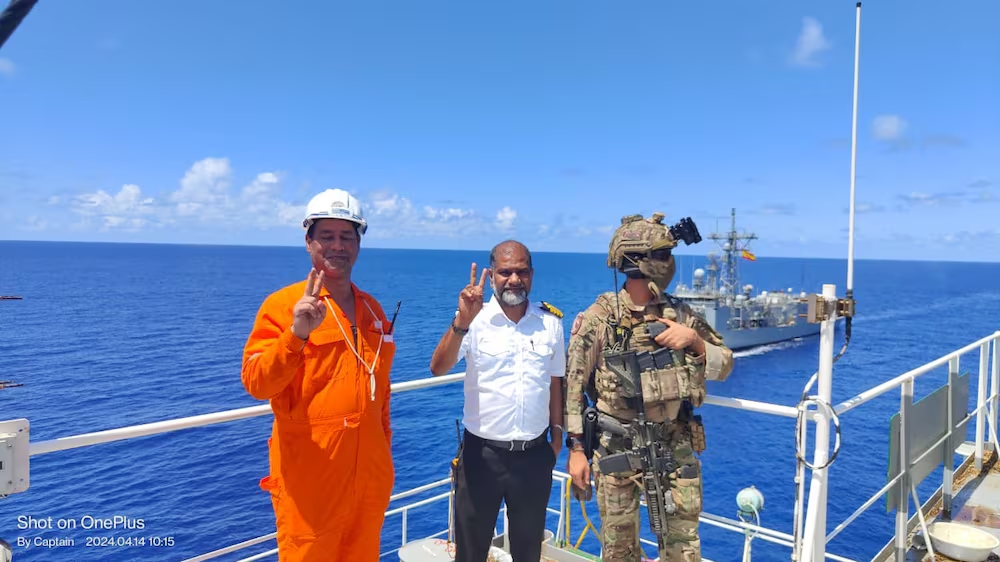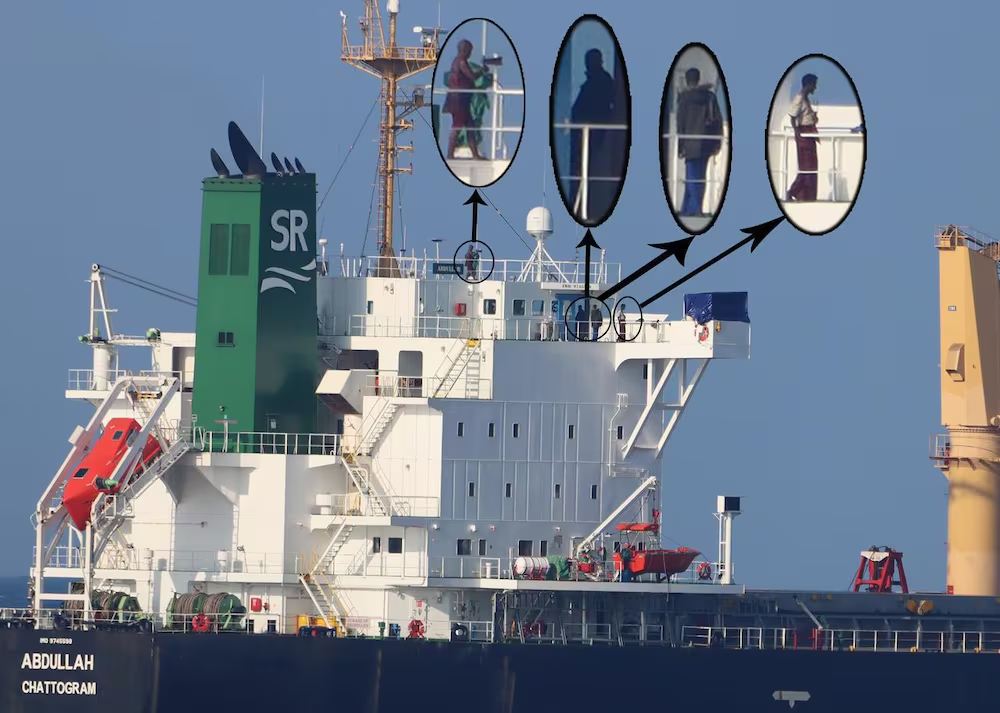
NAIROBI — After being all but stamped out by international naval forces following its late-2000s heyday, piracy has made a sudden return to the Horn of Africa. In the past month, there have been six suspected piracy incidents near Somalia, five of them successful, including three in the last week. That’s compared with zero successful attacks in 2016.
Three more murky maritime incidents off the coast of Somalia’s Galmudug state, where suspected illegal fishing vessels paid “fines” that may in fact have been ransoms, suggest that piracy has rebounded on a scale even larger than previously reported.
“Now it’s in the original home of piracy, in an area they thought they cleaned up,” said John Steed, a senior maritime expert at the U.N. Office of Drugs and Crime. “It’s very disappointing.”
The spike in banditry on the high seas off the Horn is a blow to the decades-long battle to stem piracy there, and bad news for the international shipping industry, which transports $700 billion worth of cargo through the dangerous corridor each year. It’s also a stark reminder that one of the main drivers of piracy, rampant illegal fishing that depletes local fish stocks and drives some fishermen to take up arms, remains as big a problem as ever.
On Saturday, pirates reportedly boarded a Tuvalu-flagged vessel known as the OS35, which was apparently traveling through the Gulf of Aden. The hijacking came on the heels of two similar attacks last Monday, the first led by a kingpin known as Bakeyle, or “Rabbit,” whose men commandeered a cargo ship roughly 130 miles off the Somali coast and charted a course toward the coastal town of Hobyo, a notorious former pirate stronghold in the Galmudug state, according to Ben Lawellin, the Horn of Africa project manager for Oceans Beyond Piracy. The second attack, reported by Britain’s Maritime Trade Operation earlier the same day, involved suspected pirates attempting to board another ship north of Somalia near the entrance to the Red Sea, but backing off after armed guards aboard the vessel made a show of force.
Those incidents followed an April 2 attack on an Indian-flagged cargo vessel near the Yemeni island of Socotra, which is more than 125 miles from the Somali coast. The hijackers, led by another Galmudug pirate leader called Afweyne Dhibic, or “Big Mouth,” also headed toward Hobyo with their quarry, according to Oceans Beyond Piracy. The Galmudug pirates have demanded ransom in both cases.
Earlier in March, pirates hit two ships in Somalia’s semiautonomous Puntland region, which is north of Galmudug. Pirates under kingpin Jacfar Saciid Cabdulaahi captured the Aris 13 oil tanker, the first large merchant vessel allegedly hijacked in Somali waters since 2012. The other ship, a fishing vessel, was reportedly hijacked for use as a “mothership” to launch further attacks. It was brought to the Puntland town of Eyl, made famous for its pirates by the Hollywood film Captain Phillips. Both ships and crew were eventually released.
The resurgence of piracy in the Horn of Africa’s busy transport corridor comes when both anti-piracy forces and shipping companies have let down their guard. A NATO naval force pulled out of the Horn in December, citing the decline in pirate attacks, though a European Union force remains. Lawellin said that many cargo ships plying Somalia’s waters have also stopped taking basic precautionary measures, such as hiring armed guards on their ships and sailing at higher speeds farther from shore.
“As piracy declined, the use of these threat mitigation measures also declined,” Lawellin said. “The opportunity for pirates to hijack vessels is still present, and it appears that some still possess the capability and intent to venture out to sea in search of targets.”
The continued threat also reflects the fact that little has been done to address what is often cited as the root of piracy in Somalia: illegal fishing by foreign vessels, which Somali fishermen say drives them to take up arms to protect their shoreline. The international navies, which deployed to the region in 2008 amid rapidly escalating pirate attacks, have a U.N. mandate to stop hijackings, but they are not empowered to block the foreign fishing fleets that contribute to the underlying economic problem.
“The priority is we need the mandate of the international naval forces guarding the coast of Somalia to inspect fishing vessels,” Said Jama, who until recently served as Somalia’s deputy fisheries minister, told Foreign Policy. “We are still crying to get a U.N. resolution allowing these vessels to inspect any fishing vessels.”
Somali federal law forbids foreign ships from fishing within 15 miles of the coast in order to preserve fisheries for small-scale fishermen. Somali law also bans destructive fishing methods like bottom trawling, where ships drag nets or other devices along the seafloor, scooping up whatever is in their path and wrecking coastal ecosystems.
But laws have failed to halt such practices in places like Puntland, where the federal government based in Mogadishu exercises little control. Jama said Yemeni and Iranian dhows with armed guards routinely enter Somali waters unimpeded and cut the nets of small fishermen in their way. Even worse, foreign ships sometimes practice “high-grading” — keeping only the most profitable fish species while tossing the rest overboard to save cargo space, even as drought-stricken Somalis on shore face a possible
Pirates will not be eliminated as long as there is illegal fishing, because those people who are doing piracy consider themselves heroes defending their resources






















![New PM Starmer names first cabinet after landslide win British Prime Minister Keir Starmer looks on, at Number 10 Downing Street, following the results of the election, in London, UK, July 5, 2024 [Kevin Coombs/Reuters]](https://i0.wp.com/www.horndiplomat.com/wp-content/uploads/2024/07/2024-07-05T115520Z_52034812_RC2ZO8AP0G9J_RTRMADP_3_BRITAIN-ELECTION-1720202222.webp?resize=100%2C70&ssl=1)








